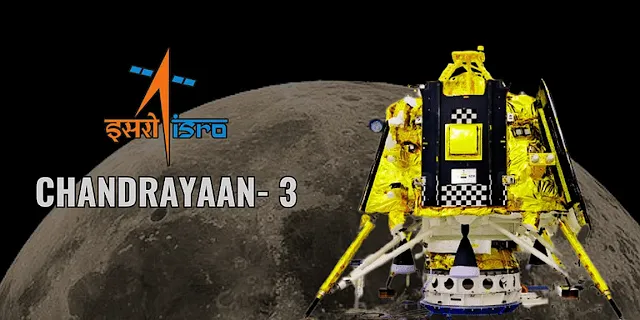Cosmic Wonders Await: Chandrayaan-3's Game-Changing Features
 |
Cosmic Wonders Await: Chandrayaan-3's Game-Changing Features |
1. Continuation of Lunar Exploration:
The first and second Chandrayaan missions, launched in 2008 and 2019 respectively, were remarkable successes. They unveiled key insights about the Moon's surface, composition, and its history. Chandrayaan-3 seeks to build upon this foundation and delve even deeper into lunar mysteries. One of the primary advantages of this mission is its continuity. By following a series of missions, ISRO can accumulate a rich dataset over time, enabling scientists to track changes, trends, and anomalies on the lunar surface. This continuity is vital for drawing accurate conclusions about the Moon's evolution and its relation to Earth.
2. Enhanced Technological Proficiency:
Every space mission presents a unique opportunity to push technological boundaries. Chandrayaan-3 is no exception. By incorporating innovative technologies in the mission's design, ISRO can advance its technological capabilities. This not only benefits the mission itself but also has broader implications for India's space program. The development of cutting-edge instruments, precision landing systems, and communication technologies can find applications in other space endeavors, fostering a culture of innovation and expertise.
3. Precision Landing and Rover Deployment:
Chandrayaan-3 aims to achieve precision landing on the lunar surface, a feat that has its own set of advantages. Precision landing increases the chances of landing in scientifically interesting regions, such as areas with high mineralogical diversity or potential water ice deposits. Additionally, the successful deployment of a rover enhances our capacity to explore these regions comprehensively. A rover can traverse diverse terrains, collect samples, and conduct experiments that contribute to our understanding of lunar geology, chemistry, and potential resources.
4. Investigating Lunar Water Resources:
One of the most exciting prospects of Chandrayaan-3 is its potential to contribute to the understanding of lunar water resources. Water is a critical resource in space exploration as it can be broken down into oxygen and hydrogen for life support systems and propulsion. Previous missions have provided evidence of water molecules on the lunar surface, particularly near the poles. Chandrayaan-3 could provide more precise data about the distribution, abundance, and form of water ice on the Moon. This information is invaluable for planning future human missions to the Moon and beyond.
5. International Collaboration and Scientific Contribution:
Chandrayaan-3 has the potential to foster international collaboration in space exploration. As space agencies and scientists from different countries come together to share expertise, data, and resources, the mission's outcomes become even more impactful. Collaborative efforts not only reduce costs but also enhance the depth of research. Chandrayaan-3 can thus contribute to the global scientific community's understanding of the Moon and its role in the broader context of planetary science.
6. Inspiring the Next Generation:
Space exploration has a unique ability to inspire generations. The endeavors of space agencies ignite curiosity and wonder among young minds, encouraging them to pursue careers in science, technology, engineering, and mathematics (STEM). Chandrayaan-3, with its ambitious objectives and technological advancements, can serve as a powerful tool for motivating students and budding scientists. It demonstrates that with determination and innovation, seemingly insurmountable challenges can be conquered, instilling a sense of possibility and ambition.
7. Enhancing Soft Power and National Pride:
Space exploration is not only about scientific discovery but also about showcasing a nation's capabilities on the global stage. Successful space missions bolster a country's soft power and evoke a sense of national pride. Chandrayaan-3, building upon the achievements of its predecessors, can reinforce India's position as a key player in the field of space exploration. It demonstrates the nation's commitment to pushing boundaries, conducting cutting-edge research, and contributing to the collective human endeavor of understanding the universe.
In conclusion, Chandrayaan-3 represents a remarkable leap forward in India's quest to unravel the mysteries of the Moon. Its advantages span scientific, technological, collaborative, and inspirational realms. By continuing the exploration of the lunar surface, ISRO can accumulate invaluable data that enhances our understanding of the Moon's past, present, and potential future. The mission's precision landing, rover deployment, and focus on water resources hold promise for breakthrough discoveries that can shape the course of future space exploration. As Chandrayaan-3 embarks on its journey, it not only advances our scientific knowledge but also captures the spirit of human curiosity and ambition, reminding us of the infinite possibilities that lie beyond the sky.
